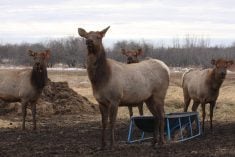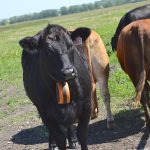Earl McLaren and his colleagues at Manitoba Starch Products travelled to Europe several years ago for two weeks of meetings.
The Carberry, Man., company manufactures and sells potato starch as a food ingredient and it wanted to meet Europeans in the same industry.
After many conversations about potential uses for potato starch, McLaren and his associates had one final meeting to attend in the Netherlands.
“We did everything we could to get out of this. We had two weeks of solid meetings. We wanted to go to Amsterdam and unwind,” recalled McLaren, who is president of the company.
Read Also

Why feds imposed EV tariffs
Moe and Kinew have a fight on their hands when it comes to eliminating the EV tariff. Canada has to worry about pissing off the U.S. and Mexico and hundreds of thousands of auto workers.
However, that last meeting changed the direction of McLaren’s business because it inspired him and his brother Derek start a new enterprise in Carberry that is turning potatoes into plastic.
They formed a joint venture company with Rodenberg Biopolymers of Oosterhout, Netherlands, which had patented a technique to convert potato starch into a biodegradable plastic called solanyl.
The name is based on the scientific name for the potato: solanum tuberosum.
The McLarens’ company, Solanyl Biopolymers, was formed in 2005 and holds the rights to the technology in North America.
McLaren told Capturing Opportunities, a recent rural business forum in Brandon, that Solanyl Biopolymers remains an emerging company. Manitoba Starch Products, which employs 15, is still his main source of revenue. However, he believes there are significant market opportunities for biodegradable plastics in North America.
“There’s a lot of interest from everybody. You see it on the news. From Frito-Lay and their chip bags and Coca Cola and their bottles.”
Solanyl Biopolymers doesn’t produce a specific plastic product, such as plant pots or cutlery. Instead, it produces a plastic granule, or resin, that can be used in injection molding systems.
“We want to supply the resins to all the companies, whether it be GM or whoever, so they can then use their equipment to make whatever part or pieces (they need),” McLaren said.
No company has yet placed a purchase order with Solanyl Biopolymers, but McLaren said many manufacturers have tested the granules.
“These companies are extremely interested (in bioplastics), but they’re also very cautious about going out and making a mistake.”
The companies that have tested the granules make products as varied as furniture and tree nursery growing tubes.
Cost is another roadblock.
Plastic made from potato starch costs 30 to 40 percent more than petroleum based plastic, but McLaren hopes education and possible tax incentives can overcome the barriers.
“It’s going to take a while for some of the companies to be forward thinking and accept the product…. That will help ramp up the manufacturing.”
The Manitoba government launched a strategy earlier this year to expand the provine’s bioproducts industry, which may help McLaren achieve his goals for Solanyl Biopolymers.
Thirty Manitoba companies manufacture bioproducts from agricultural and forestry materials, but the province expects the sector to expand rapidly over the next decade, adding 700 jobs and generating $2 billion in revenue by 2020.
“For 2011, the province has more than $4 million in project funding available to research institutions and entrepreneurs working on developing innovative bio-products,” Manitoba premier Greg Selinger said in a news release.
McLaren has already developed a sales pitch for potential customers.
“Would you like a product that breaks down when you’re done with it, or do you want a product that’s still going to be there in 900 years?”















